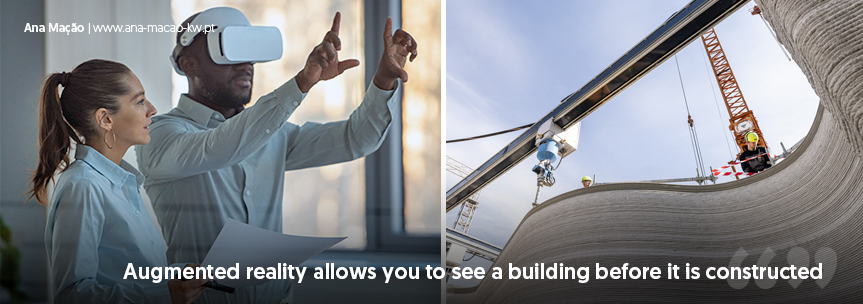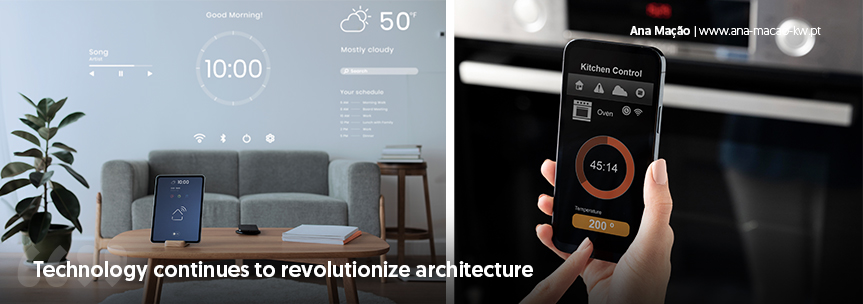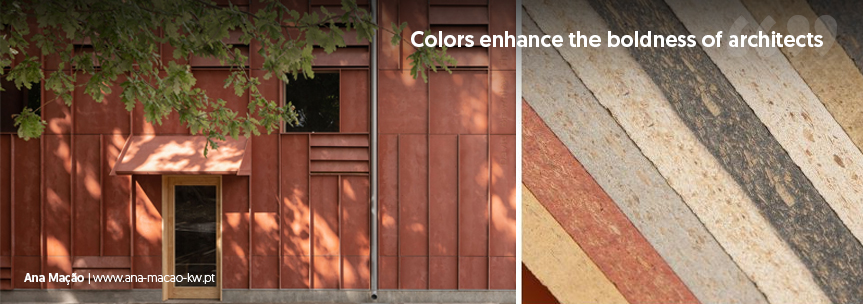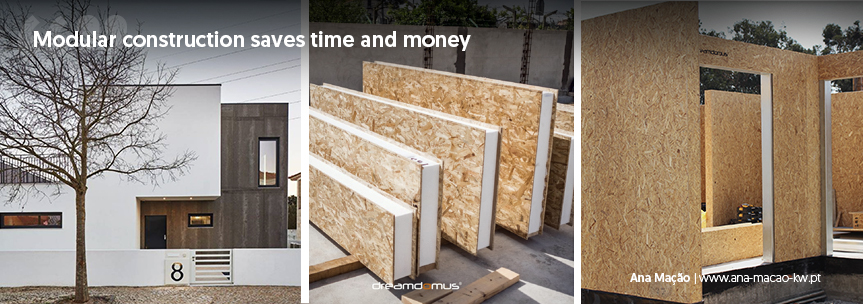Many factors will drive new trends, including technological advances, sustainability concerns, and changing needs of society itself. In this article, we'll explore the top architectural design trends for 2024. Whether you're an ambitious architect or a design enthusiast, it's worth reading to discover the captivating developments that await us.
Fundamental aspects to take into account
Sustainability at the forefront of concerns
Sustainability is one of the most critical factors that will drive trends in 2024. Environmental concerns are increasingly present in society and architecture is no exception. Architects are increasingly focusing on creating green and energy-efficient buildings.
Some of the main challenges of sustainable architecture include:
- Reduce energy and water consumption: Buildings are responsible for a large part of the world's energy and water consumption. Architects are developing new solutions to reduce this consumption, such as the use of solar and wind energy, rainwater collection systems and efficient construction materials.
- Reduce the environmental impact of construction materials: The production of construction materials has a significant impact on the environment. The architects seek to use more sustainable materials, such as certified wood, recycled materials and local materials.
- Create healthier and more comfortable spaces: Sustainable architecture is not limited to reducing environmental impact. It can also contribute to creating healthier and more comfortable spaces for residents. Architects are using solutions such as natural ventilation, natural lighting and materials with antimicrobial properties.Building facades will have better thermal and acoustic insulation.
- Taking advantage of solar energy: We will also see the arrival of solar panel solutions that are not limited to placement on the top of buildings, but also on facades, glazed surfaces, among others.
Technological advancements

Technology will be another major driver of architectural trends in 2024:
- 3D Printing: This technology has been gaining popularity in architecture in recent years. It allows architects to create complex shapes and structures that would be difficult or impossible to build with traditional methods. By 2024, 3D printing is being used to construct entire buildings, from houses to bridges, as well as to create custom furniture and appliances.
- Augmented (AR) and Virtual Reality (VR): AR and VR are being used in architecture to create more immersive experiences for users. AR can be used to visualize 3D architectural designs in the real world, while VR allows users to explore virtual buildings and spaces. In 2024, AR and VR are being used to improve the design process, customer communication and user experience, allowing you to visualize what a building will look like before it is even built.
- Artificial Intelligence (AI): AI is being used in architecture to automate tasks, improve efficiency and make more informed decisions. AI can be used to analyze data, generate drawings and models, and even design entire buildings. By 2024, AI is being used to create more efficient, safe and sustainable buildings.
- Robotics are being used in architecture to perform dangerous or repetitive tasks. Robots can be used to build structures, install equipment and even clean buildings. In 2024, robotics is being used to make construction safer and more efficient.
The technology trends we explored above are just a few of the many that are shaping the future of architecture. As technology continues to evolve, architects will have access to new tools and possibilities to create more innovative, sustainable and efficient buildings.
Changing needs
The needs of our society are also changing. This is reflected in current trends in architectural projects. In the past, buildings stood out above all for their functionality. However, in 2024, we anticipate the emergence of more buildings designed with well-being, comfort and safety in mind. Such an approach will include the integration of natural elements, such as natural light, green spaces and biophilic design, as well as the use of technology to manage lighting, ventilation and security in buildings.
On the other hand, increasing urbanization also influences architecture. Urban spaces, which are increasingly limited, require buildings to be flexible and adaptable to different needs . Architects are focusing on multifunctional spaces that can serve different purposes. They also employ design solutions that allow you to reconfigure spaces with ease.
Top architectural design trends for 2024
Let's now go into detail about some of the critical trends in architectural design most likely to influence the world of architecture in 2024:
Smart Homes: Technology Integration

Technology continues to revolutionize architecture. By 2024, smart homes will become more common. Architects will integrate voice-activated assistants, automated lighting systems and temperature controls into their designs.
Smart homes provide convenience, energy efficiency and enhanced security. All of this contributes to an easier and more comfortable life.
This version complies with the rules of the Spelling Agreement and maintains an affable and informative tone, suitable for your blog.
Buildings with energy self-sufficiency: focus on sustainability
Sustainability will be a top priority in 2024. Architects will emphasize buildings with energy self-sufficiency. These are homes that generate as much energy as they consume.
Architects will combat climate change by reducing our carbon footprint. This will be achieved through passive solar design and natural ventilation. The use of renewable energy sources, such as solar panels and geothermal systems, will be promoted. These sustainable practices will help protect the environment and mitigate the impact of climate change.
Vibrant and contrasting colors

With the increasing popularity of intense and contrasting colors, Valchromat could stand out in interior projects in 2024. Its vibrant color palette offers designers and architects the possibility to explore their projects with boldness. Color brings personality and energy to any space, from a contemporary living room to a cozy kitchen or a modern office.
Viroc , in turn, makes it possible to create environments with the appearance of concrete, enriched by different colors, obtained through organic pigments. This process results in a heterogeneous and natural appearance. With Viroc, we have a diverse color palette available, ideal for use mainly outdoors.
Adaptive Reuse: Transforming Existing Structures
Adaptive reuse is an environmentally conscious architectural approach that involves transforming existing structures into new functional spaces , rather than demolishing and rebuilding them . This practice is gaining more and more popularity, due to its multiple benefits:
- Ambientais: reduz o consumo de recursos naturais, como materiais, energia e água;
- Económicos: diminui custos em comparação com a demolição e reconstrução, podendo ainda gerar novos empregos e oportunidades de negócio;
- Sociais: contribui para a revitalização de áreas urbanas degradadas e para a preservação do património histórico e cultural.
Esta tendência tem levado à transformação de fábricas, armazéns e igrejas abandonadas em espaços residenciais vibrantes, escritórios e centros culturais. Ao preservar a história, reduzir o desperdício e promover o desenvolvimento urbano sustentável, a reutilização adaptativa apresenta-se como uma solução inovadora e responsável no panorama arquitetónico atual.
Construção Modular: Eficiência e Flexibilidade

Modular construction is changing the way architects design and build buildings. This is a construction method that uses prefabricated modules in specialized spaces and which are subsequently assembled at the installation site. Modules can vary in size, shape and function, allowing the creation of a wide range of structures, from housing and offices to public facilities and commercial complexes.
Modular construction presents a number of benefits, including:
- Efficiency: Modular construction can be accomplished faster and with less labor than traditional construction. This approach saves time and money and improves quality control.
- Flexibility: modules can be customized to meet the specific needs of each project, which allows for greater design flexibility and easy expansion or reconfiguration;
- Sustainability: modular construction uses materials efficiently, reducing the waste of natural resources.
Wellbeing-Focused Spaces: Improving Wellbeing
In 2024, architects will focus on well-being. They will design spaces to promote relaxation, mindfulness and health. Meditation rooms, yoga studios and wellness-focused workplaces will be common. The architects will use natural light and biophilic design, incorporating acoustic comfort to improve overall well-being.
Kitchens: the return to wooden cabinets

After years of replacing dark, honey-toned wood kitchen cabinets with white and gray cabinets, wood is back in vogue. Previously considered outdated, wooden cabinets now appear more organic and welcoming. Wood, a natural, warm and cozy material, gives kitchens a touch of sophistication and elegance.
Texture emerges as another current design trend. Textured backsplashes will be trending over the next three years, highlighting rougher, more opaque countertop finishes in contrast to smoother, more polished surfaces. Gena Kirk, vice president of corporate studio at KB Home, says:
Stains in medium and darker tones are timeless and remain fresh after several years of white cabinets predominating. Stained cabinets pair perfectly with cream-toned surfaces and marble wall coverings, creating an organic, natural look in a kitchen.
Wooden cabinets adapt to different styles, from classic to modern, and can be made from different types of wood, such as oak, walnut or mahogany. Oak is recognized for its durability and resistance, while walnut is distinguished by its nobility and elegance. In addition to aesthetic beauty, wooden cabinets are functional, resistant, durable and easy to maintain.
Circular Design: Minimizing Waste
The circular design aims to reduce waste. In 2024, architects will use recycled and recyclable materials. This approach focuses on disassembly and reuse. They will utilize on-site recycling facilities and circular economy principles. This will contribute to a more sustainable future, also reducing waste.
Resilient Design: Adapting to Climate Change

Resilient design addresses climate-related risks. Architects will design buildings and communities capable of withstanding extreme weather events. There will be an increased focus on flood-resistant materials and sustainable stormwater management. This will lead to more efficient and resilient urban planning, ensuring rapid recovery and adaptation to climate challenges.
Multipurpose Spaces: Flexibility and Adaptability
Spaces need to be flexible and adaptable. Architects will design multifunctional spaces in 2024 that can be transformed to meet changing needs. Conference rooms could become collaborative workspaces, while retail spaces could transform into 'pop-up' galleries. Multipurpose spaces are characterized by their flexibility and adaptability. They are designed to be used in different ways, according to the needs of residents, through a variety of strategies, such as:
- Modular furniture : Modular furniture is designed to be easily reconfigured, allowing spaces to be adapted for different activities.
- Movable partitions: Movable partitions can be used to create or divide spaces as needed. For example, a living room can be used as an office during the day and a dining room at night.
Outdoor Spaces: Expanding Beyond Walls
In 2024, outdoor spaces will gain prominence. The architects will create fluid transitions between indoor and outdoor areas, highlighting the importance of these spaces. These will promote social interaction, relaxation and a more intimate connection with nature.
Some of the ways we will see this trend develop include:
- Windows and sliding doors , with minimalist design frames, which open widely, establishing a continuous connection between the interior and exterior. This feature will allow people to enjoy natural light and fresh air, even while indoors.
- Terraces and balconies will be expanded and equipped with amenities designed for leisure. These spaces will be transformed into welcoming places to relax and socialize.
- Gardens and courtyards will be harmoniously integrated into the buildings, creating natural and inviting environments. Rooftop gardens, terraces and outdoor kitchens will be common elements in the new projects.
Data-Driven Design: Performance Optimization
Architecture is changing. By 2024, architects will optimize building performance using data-driven design. Sensors, simulations and real-time monitoring will provide information about the functionality of a building.Architects will make informed decisions, increasing energy efficiency, occupant comfort and overall performance. This leads to sustainable, user-centered designs.
Some examples of how data-driven design can be used to optimize building performance include:
- Comfort optimization: Data can be used to analyze the thermal behavior of buildings and identify areas for improvement. For example, the data can be used to identify areas of the building where thermal comfort is insufficient and to develop solutions that improve ventilation or thermal insulation.
- Reducing energy consumption: Data can be used to analyze the energy consumption of buildings and identify faults. For example, the data can be used to identify inefficient equipment or to develop energy management strategies.
- Improving sustainability: Data can be used to analyze the environmental impact of buildings and identify opportunities for improvement. For example, the data can be used to identify more sustainable building materials or to develop strategies to reduce greenhouse gas emissions.
Biomimicry: Learning fromNature

Biomimicry is a design approach that seeks inspiration from nature to solve human problems. Biomimicry is gaining more and more space in architecture, as it offers sustainable and efficient solutions. Biomimetic architects study nature to develop buildings that are more comfortable, efficient and resilient, incorporating elements such as living walls, green roofs and indoor gardens.
Architects will replicate natural forms, processes and systems, studying nature's patterns and functions to create stunning, sustainable and environmentally friendly structures. Biomimicry explores billions of years of natural evolution, aiming to improve air quality, reduce stress and increase productivity, bringing calm and serenity to our lives by imitating the natural world.
There are examples of biomimetic buildings spread across the world.Some of the best known include:
- Milwaukee Art Museum, Wisconsin, USA: The building has a facade that opens and closes like a butterfly's wings, allowing natural light to enter.
- Water Cube, Beijing, China: The building is shaped like a water drop and is coated with a material that helps keep the internal temperature cool.
- University of Twente Buildings, Netherlands: The buildings are made of wood and have a design that maximizes natural ventilation.



